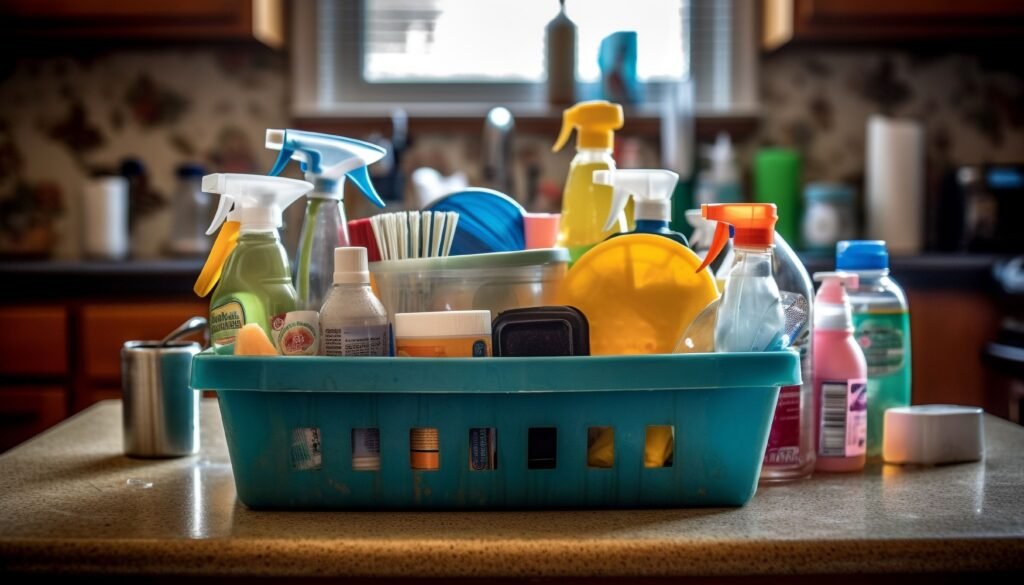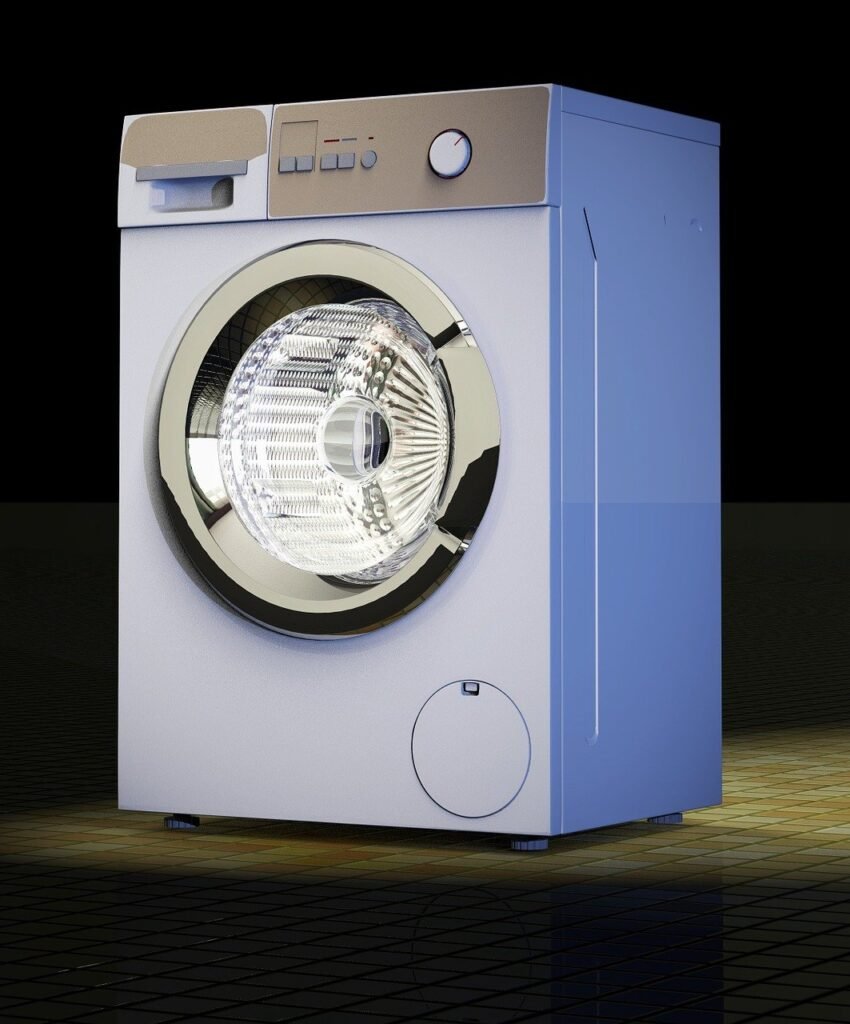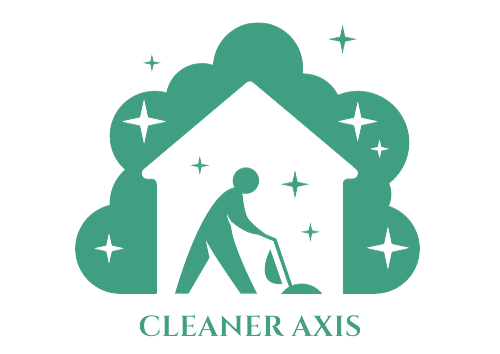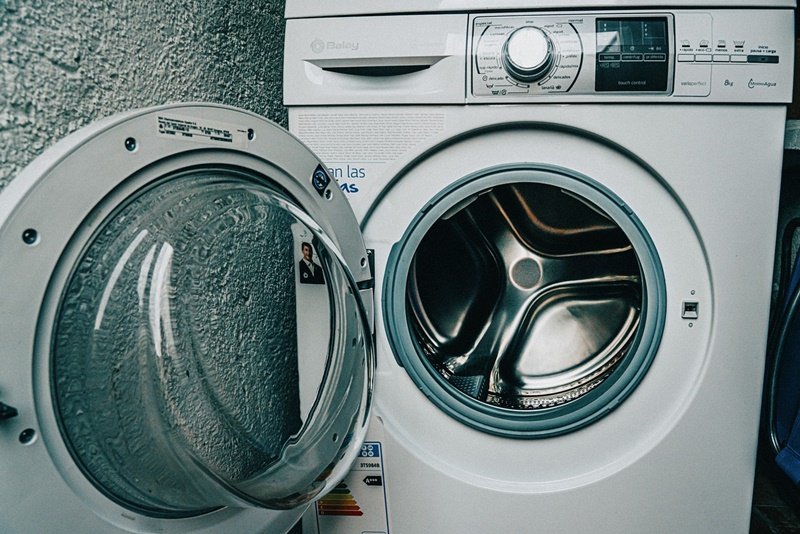How To Clean Washing Machine | 5 Easy Steps
how to clean washing machine ? Even though it might not be on your daily to-do list, cleaning your washing machine is necessary to keep it operating efficiently and guarantee that your laundry always comes out clean and fresh. Detergent residues, mineral deposits, and even mold can accumulate inside your machine over time, compromising both the cleanliness of your clothes and the machine’s efficiency. This is a comprehensive guide to cleaning a washing machine.

Recognizing the Cleaning Need
Let’s examine the reasons why routine washing machine cleaning is so important before we get started. Detergent, fabric softener, and dirt residues can build up over time and create an ideal environment for the growth of mold and germs. These accumulations might affect the machine’s operation and produce disagreeable smells.
Washing Machine Type:

Front-loading and top-loading washing machines are the two main varieties. Because of their unique designs, each needs to be cleaned using a different technique. Because of their airtight sealing, front-loading machines are more likely to develop mold, whereas top-loading machines may collect residue in many places.
Supplies You’ll Need for cleaning washing machine:

- Before beginning the cleaning process, gather the necessary materials:
- White vinegar.
- Soda baking
- sponges or microfiber cloths
- outdated toothbrush Warm water
- Scrubbing cloth or towel
- White vinegar that has been distilled or a specific washing machine cleanser (if chosen)
Steps for Cleaning Washing Machine :
1. Empty the Seals and Dispenser.
For front-loading machines: Use a vinegar and water solution to clean the rubber door gasket and get rid of any leftover mold.
If at all possible, take out the fabric softener and detergent dispenser from top-loading machines. After soaking them in vinegar-infused hot water, use a brush to remove any remaining residue.
2. Tidy Up the Drum
Start a hot water cycle: Make sure the washing machine is loaded to its maximum capacity and set to the hottest water setting. Pour two cups vinegar into the detergent dispenser or straight into the drum, or use a dedicated washing machine cleaning.
For a deeper cleaning: Once it’s filled, stop the cycle and let the solution sit in the drum for around sixty minutes. Next, let the cycle continue until it is completed.
3. Tidy the Outside and Inside
Use a sponge or microfiber cloth soaked in a vinegar and water solution to clean the machine’s outer surfaces. Be mindful of any buttons, knobs, or control panels.
If there are lingering stains or residue, gently clean the afflicted areas using a paste made of baking soda and water. Old toothbrushes are useful for getting into tight spaces.
4. Last Cycle of Rinse
In order to be sure that all of the vinegar or cleaning residue is gone, do one last rinse cycle with plain water. This is an essential step in preventing odors from persisting.
5. Removing the Seals and Drum
Once the cleaning is done, keep the door or lid open so that the seals and drum can air dry completely. This action inhibits the formation of mold.
Preventive Actions:
To keep the washing machine clean for extended periods of time:
Apply the recommended amount of detergent based on the size of the load.
To let air to circulate in between washes, leave the door or lid open.
To keep residue and mold from growing, clean the drum and seals on a regular basis.

Conclusion:
Maintaining a clean and fresh laundry load is guaranteed by routine washing machine cleaning, which also increases the machine’s longevity. You can maintain the best possible condition for your washing machine and ensure that it can handle your laundry with efficiency and cleanliness by adhering to these guidelines and taking preventative measures.
Frequently Asked Questions (FAQ’s):
1. What makes washing machine cleaning necessary?
Frequent cleaning aids in getting rid of bacteria, mold, and residues that might build up in the machine over time. It guarantees that your clothing come out clean, preserves the machine’s performance, and stops odors.
2. How frequently must my washing machine to be cleaned?
To avoid accumulation, try cleaning your computer every two to three months. However, it can require more frequent cleaning if you detect smells, mold, or obvious residues.
3. Is it possible to clean my washing machine with bleach?
Bleach may be too strong for some of the machine’s rubber seals and components. It is safer and more efficient to clean using white vinegar or specific washing machine cleaners.
4. Do front-loading and top-loading machines require the same level of cleaning?
No, the cleaning techniques may vary. Because of the way they are made, front-loading machines may require extra care to keep the gasket and seals clean, which is where mold can grow. Cleaning is frequently necessary around the agitator and dispensers of top-loading machines.
5. Can I clean my washing machine with ordinary home cleaners?
Using natural and gentle cleaners, such as baking soda and vinegar, is advised. You can also use commercial washing machine cleaners made especially for this purpose by following the directions provided by the manufacturer.
6. What is the best way to stop mold growth in my washing machine?
To let air to circulate in between washes, leave the door or lid open. Regularly clean the rubber seals and the drum. Do not use more fabric softener than is advised; instead, use the suggested amount of detergent.
7. Despite cleaning, my washing machine continues to smell. How should I proceed?
Do a second cycle using vinegar or hot water mixed with a specialty cleanser. Make sure you drain away any remnants. Keep the door open so it can completely dry by air.
8. Is it possible to clean my washing machine’s filters?
Debris is captured by filters found in certain washing machines. To find these filters and to keep them clean on a regular basis to avoid clogs and preserve performance, see your machine’s handbook.
9. If I have a septic system, is it okay to use vinegar in my washing machine?
Indeed, vinegar is harmless for septic systems and can even aid in the breakdown of machine accumulation without endangering the system.
10. Can my washing machine work better after cleaning it?
Yes, a well-maintained machine performs better. Eliminating buildup and residues can enhance the quality of your washes and help avert long-term machine problems.
Maintaining a clean laundry environment and extending the life and effectiveness of your washing machine are two benefits of regular cleaning. Consult the manufacturer’s instructions or get professional assistance if you have special questions or problems with your machine.
What Does Soil Level Means On a Washer?
How To Wash Shoes In Washing Machine?








This site truly has all the information andd facts I wanted about this subject and didn’t know who too ask. https://tri1ls.webflow.io/